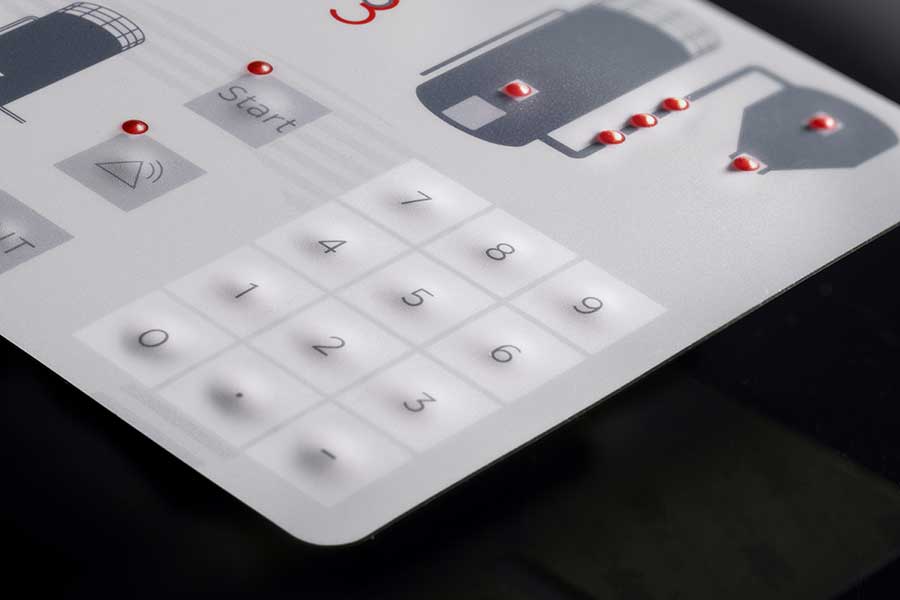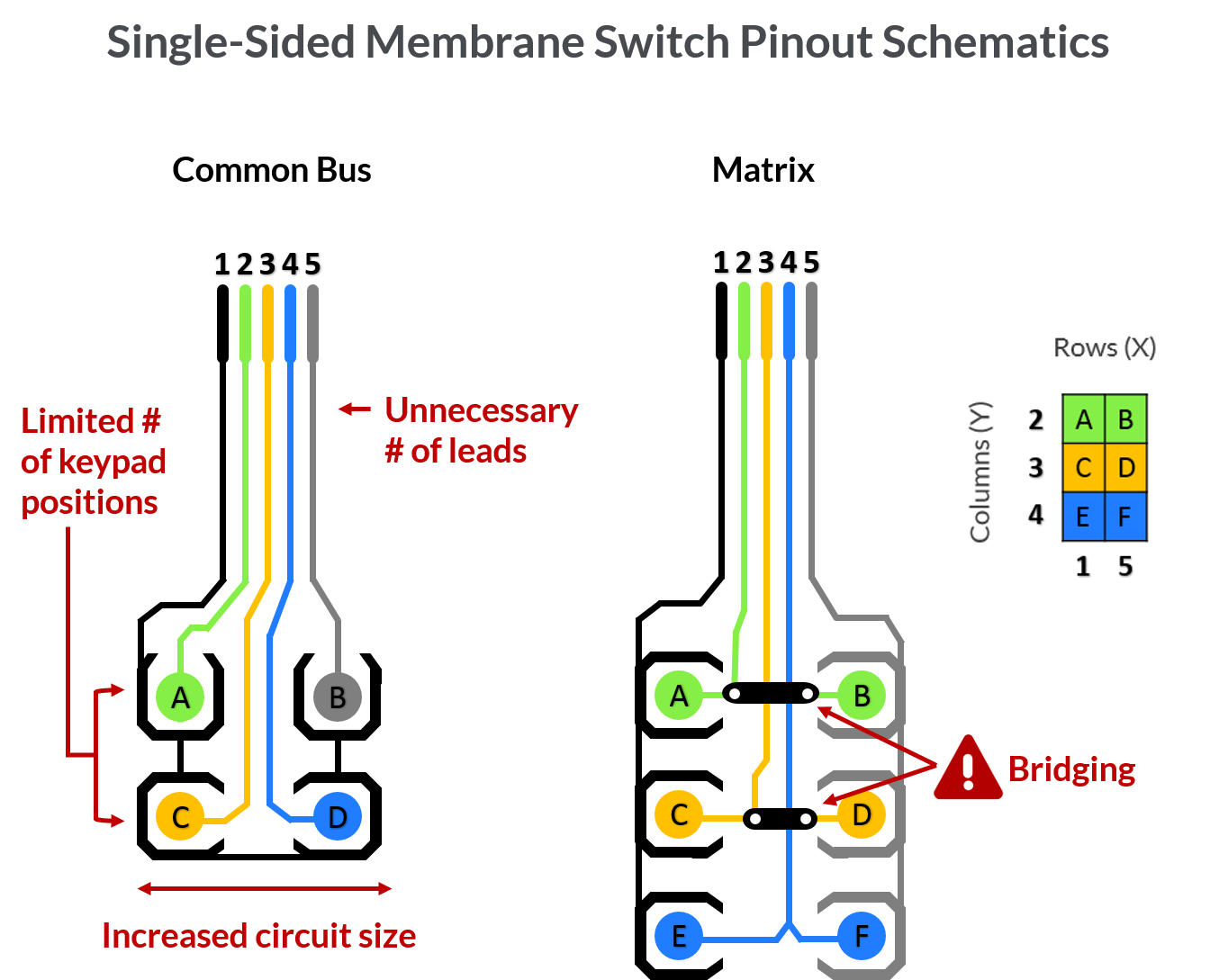Secret Advantages of Using a Membrane Switch in Industrial Applications
Secret Advantages of Using a Membrane Switch in Industrial Applications
Blog Article
Just How Membrane Switches Over Add To the Resilience of Electronic Control Panels
Membrane layer buttons play a critical role in enhancing the longevity of electronic control panels, mainly via their multi-layered building and construction which offers efficient defense against environmental factors such as wetness and dust. The lack of moving parts dramatically reduces the possibility of mechanical failings, making membrane switches over suitable for demanding applications.
Meaning of Membrane Switches

Membrane buttons are developed to be thin and lightweight, making them suitable for applications where space is limited. They can be manufactured in various forms, dimensions, and colors, using flexibility in design that fulfills aesthetic and practical needs. In addition, membrane layer switches can include various technologies, such as tactile comments and LED indications, boosting individual experience.
Because of their construction, membrane layer buttons are typically resistant to dirt, moisture, and general wear, adding to their sturdiness sought after atmospheres. Their seamless layout not only promotes easy cleansing yet also minimizes the risk of mechanical failure, making them a recommended option for suppliers looking for trustworthy interface in their electronic control panels.
Security Against Ecological Variables
The style of membrane layer switches over inherently offers a degree of security versus different ecological factors, which is important for preserving functionality in tough conditions - Membrane Switch. These buttons are usually created with layers of flexible products that shield internal components from wetness, dust, and impurities. By encapsulating the circuitry, membrane layer switches lessen the danger of short circuits and corrosion, which can dramatically hinder performance
Moreover, using robust adhesives and sealants during manufacturing enhances their resistance to environmental challenges. Membrane layer buttons can sustain direct exposure to chemicals and solvents, making them appropriate for industries such as food handling and health care, where health and tidiness are critical. Their smooth surface layout also protects against the build-up of dust and bacteria, promoting simpler cleansing and maintenance.
Temperature level fluctuations are one more ecological issue, and membrane layer switches are engineered to operate effectively throughout a wide range of temperature levels (Membrane Switch). This adaptability guarantees that control board remain functional in numerous settings, from industrial settings to customer electronics
Effect on User Interaction
Individual communication with electronic control board is substantially influenced by the layout and capability of membrane switches. These buttons give a responsive user interface that enhances the overall individual experience, enabling for user-friendly navigating and control. Their receptive nature ensures that individuals get instant responses upon activation, which is crucial for tasks requiring precision and effectiveness.
Additionally, the smooth surface area of membrane layer switches over facilitates easy cleaning and maintenance, promoting user confidence in the reliability of the interface. This cleanliness is especially crucial in atmospheres where health is vital, such as clinical or food handling setups. In addition, the compact and lightweight design of membrane switches adds to the visual appeal of control board, motivating individual interaction through a modern and sleek look.
Furthermore, the assimilation of aesthetic aspects, such as printed icons and backlighting, aids customers swiftly determine functions, decreasing the learning contour related to brand-new devices. Consequently, users can run gadgets a lot more efficiently, leading to enhanced performance and fulfillment. In summary, membrane layer switches play an essential role in boosting customer interaction by combining performance, aesthetic appeals, and ease of usage, ultimately resulting in boosted functional efficiency.
Style Flexibility and Personalization
Layout flexibility and personalization are vital elements of membrane layer switches, enabling producers to tailor digital control board to specific applications and user demands. This versatility allows for the combination of different design aspects, such as shades, graphics, and structures, which can improve the aesthetic charm and user interaction of the control board.
Membrane buttons can be customized in size and shape, suiting a wide variety of devices and applications, from industrial equipment to consumer electronic devices. This versatility makes certain that suppliers can produce user-friendly interfaces that click here for more info align with individual assumptions and functional requirements. Furthermore, the ability to integrate special features such as backlighting or tactile responses additionally improves functionality, allowing for a more interactive experience.
Additionally, the manufacturing process for membrane switches sustains the rapid prototyping of layouts, allowing producers to repeat and improve their principles quickly. This capability not only accelerates the advancement timeline but additionally makes certain that the final product fulfills specific useful and visual criteria.

Cost-Effectiveness and Longevity
Cost-effectiveness and durability are substantial advantages of membrane buttons, making them an attractive option for makers find more information and end-users alike. These switches are typically cheaper to produce than conventional mechanical buttons, largely due to their streamlined production processes and the reduced variety of elements required. This expense advantage expands not only to preliminary manufacturing yet likewise to lasting operational expenditures, as membrane layer switches frequently call for less maintenance and have a lower failing price.
Additionally, the long life of membrane switches contributes to their total worth. Constructed from long lasting products, they are resistant to environmental variables such as dampness, dirt, and chemicals, which can lead to early wear in other button kinds. The absence of moving parts minimizes mechanical failing, enabling membrane layer switches to keep functionality over prolonged durations.
This durability is specifically beneficial in applications calling for consistent efficiency under demanding conditions, such as clinical gadgets and commercial devices. Inevitably, the mix of cost-effectiveness and durability makes membrane switches over a financially viable choice for manufacturers, supplying trusted options that withstand the test of time while optimizing budgetary factors to consider.
Final Thought
In verdict, membrane buttons substantially enhance the resilience of electronic control panels with their durable construction and protective functions - Membrane Switch. Generally, membrane layer switches over represent a dependable and cost-effective selection for improving the durability and capability read this article of electronic control systems.
Report this page